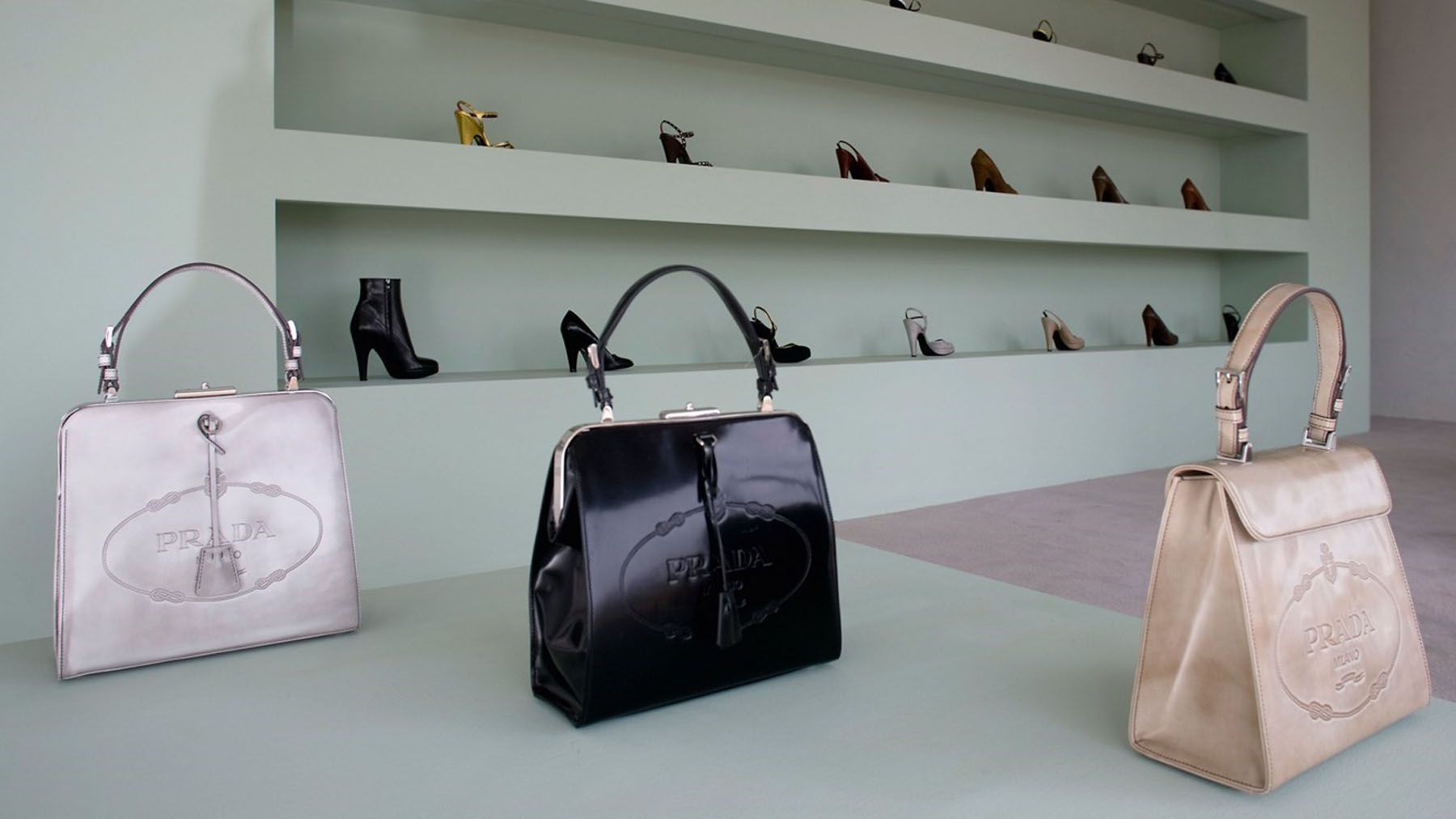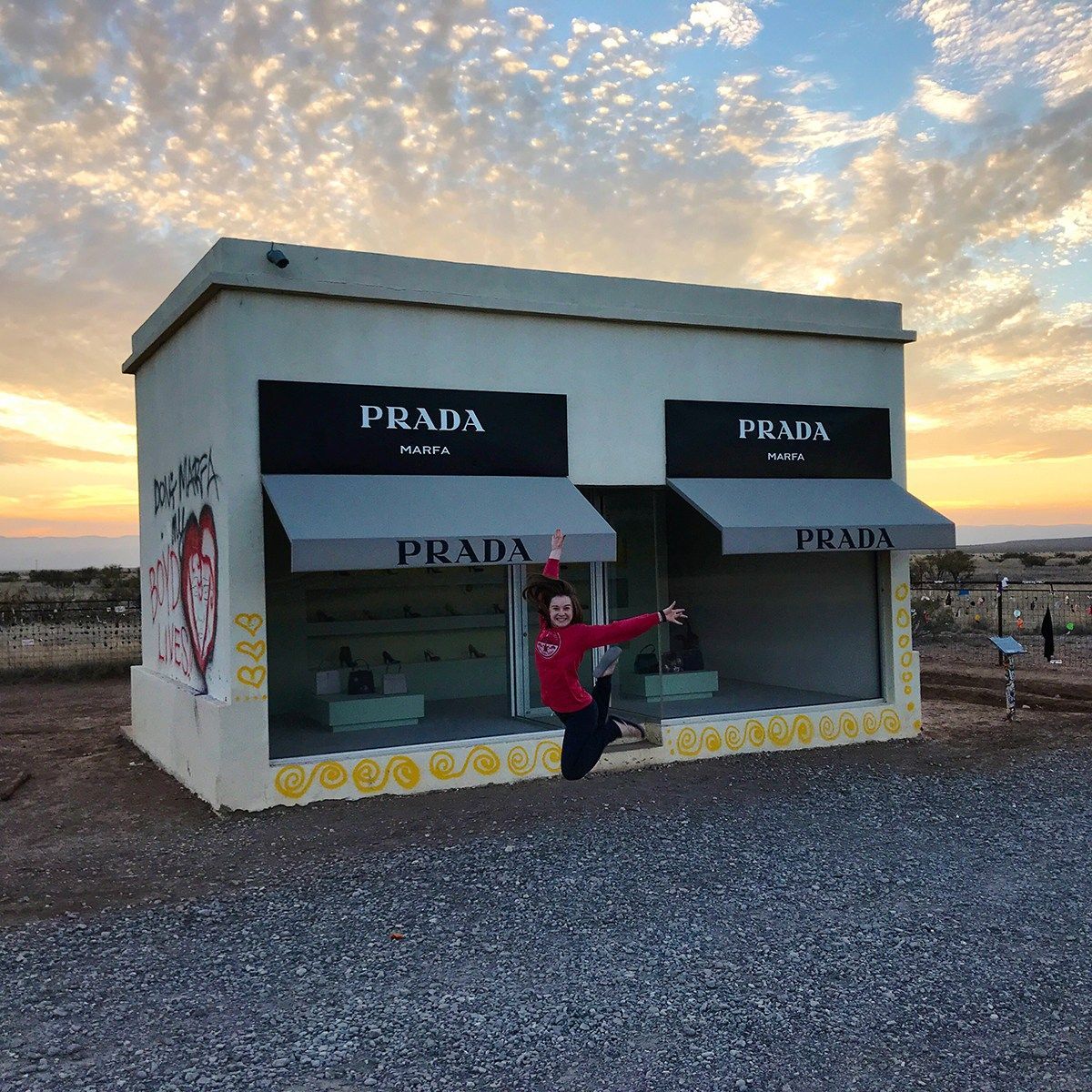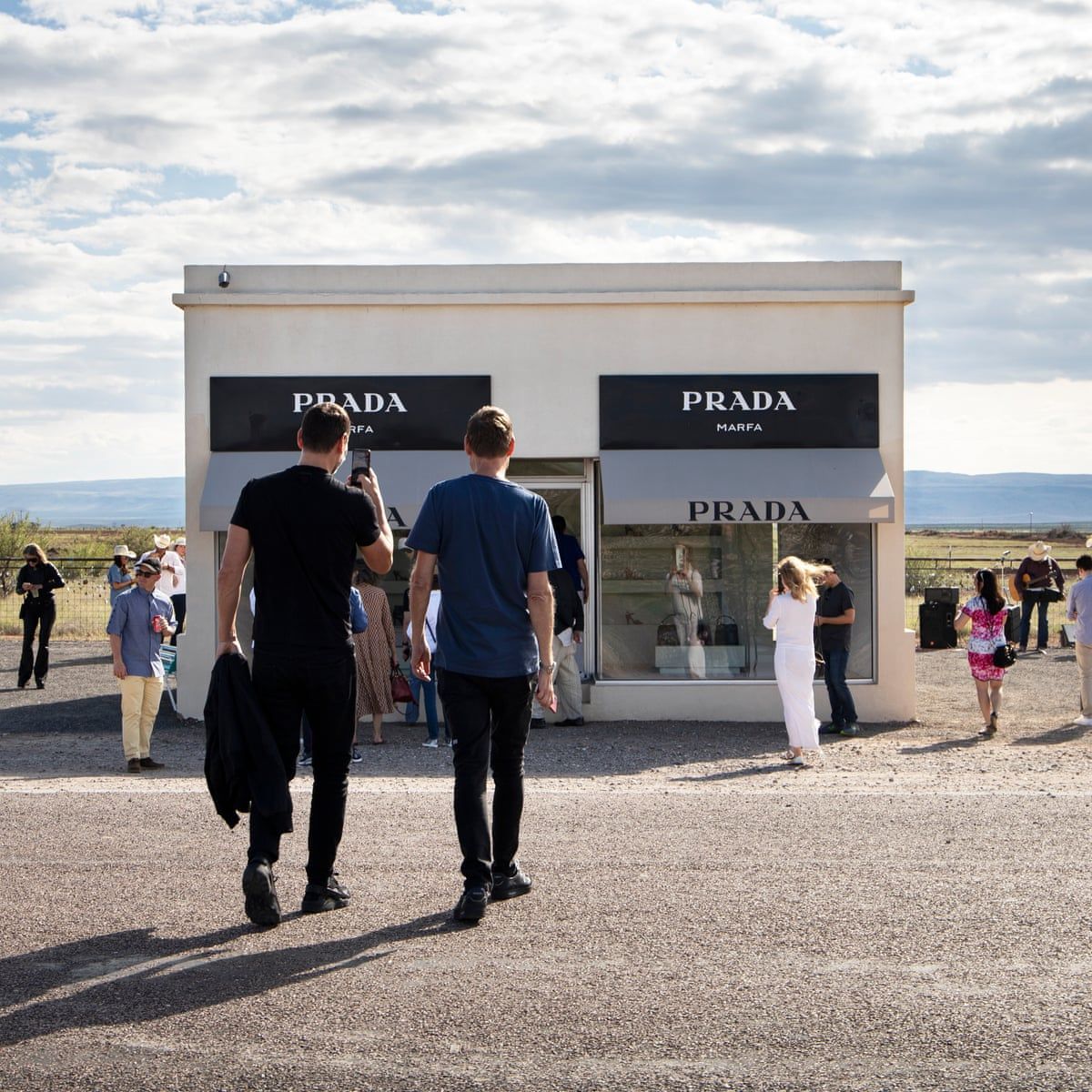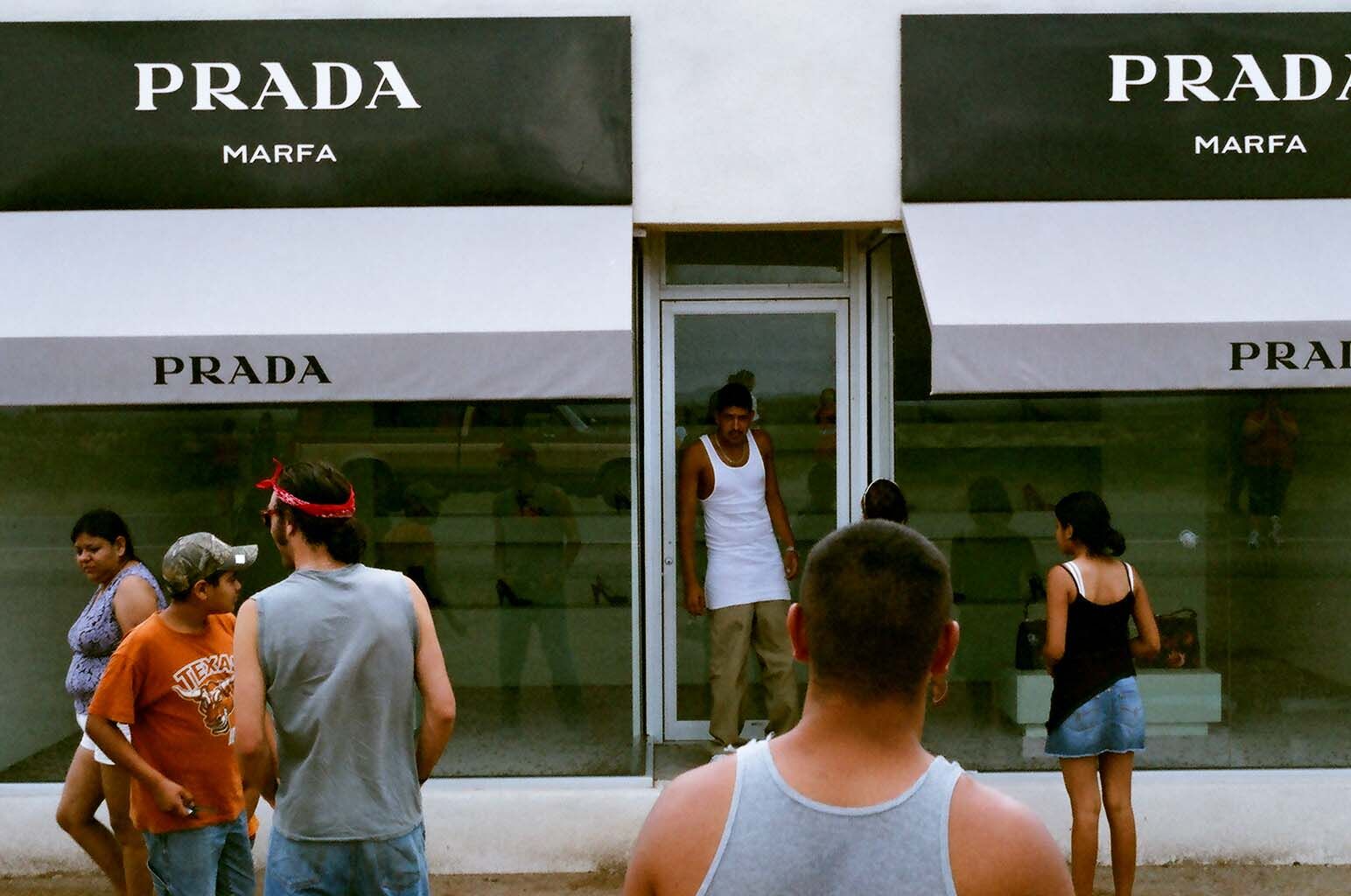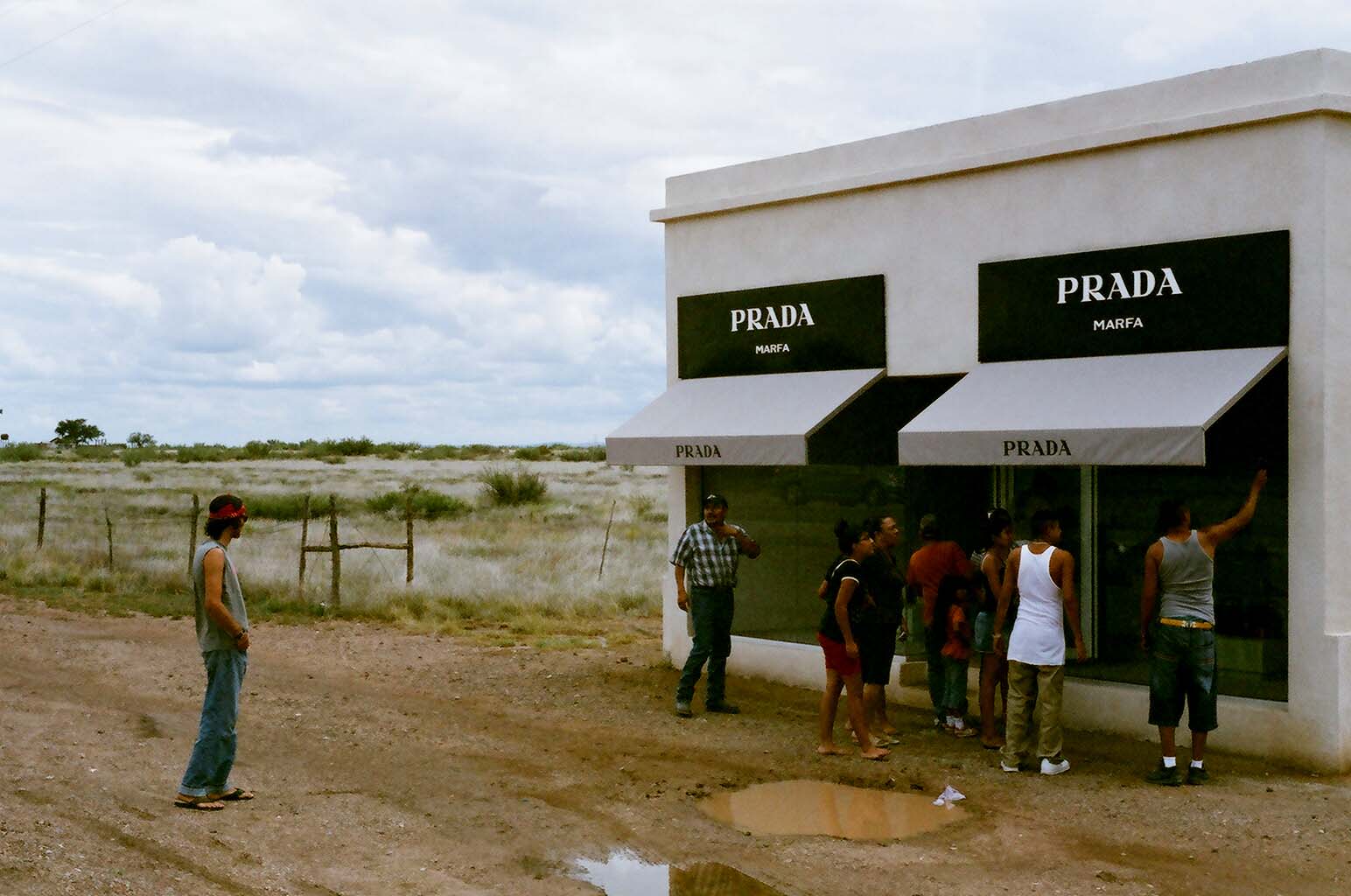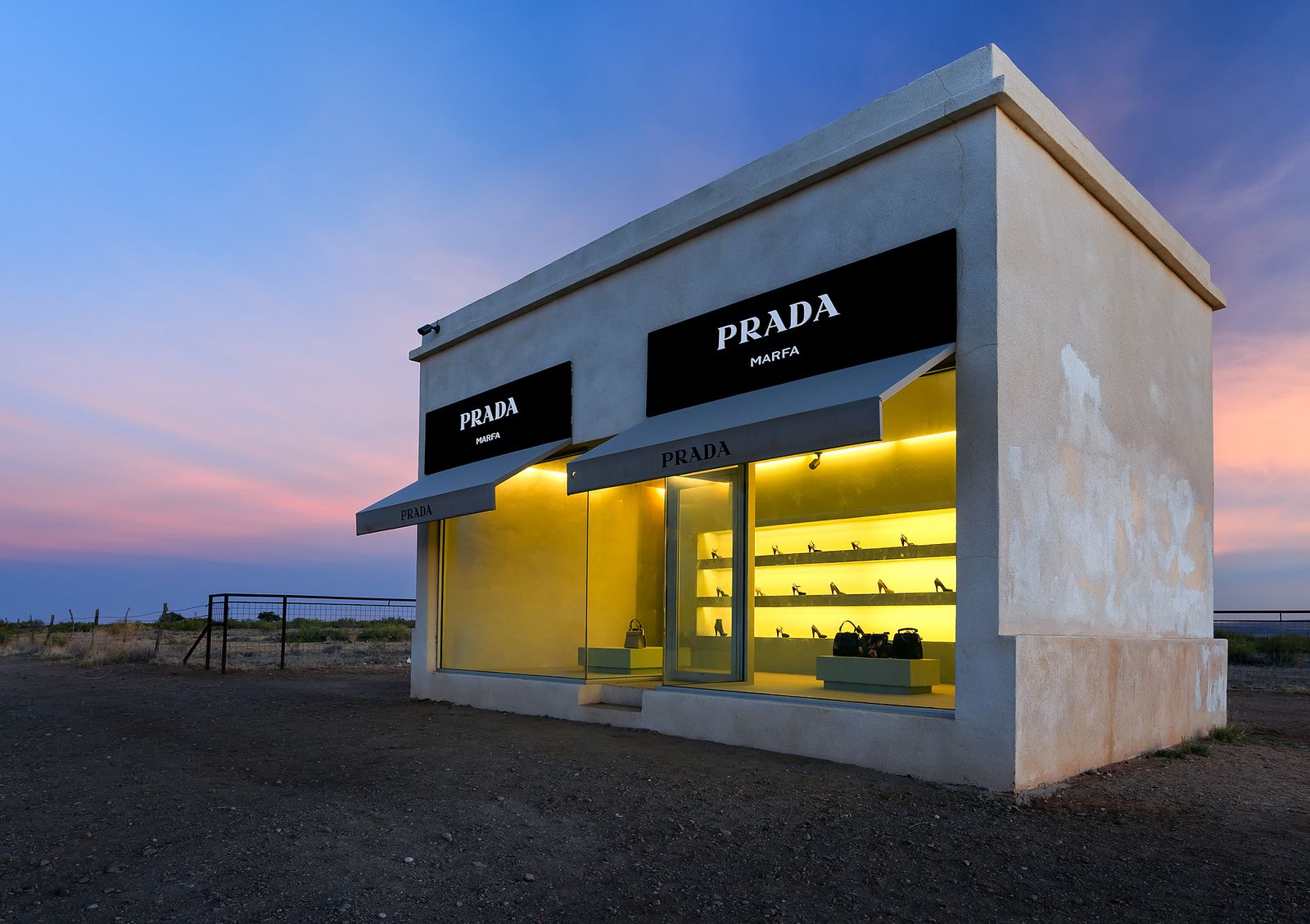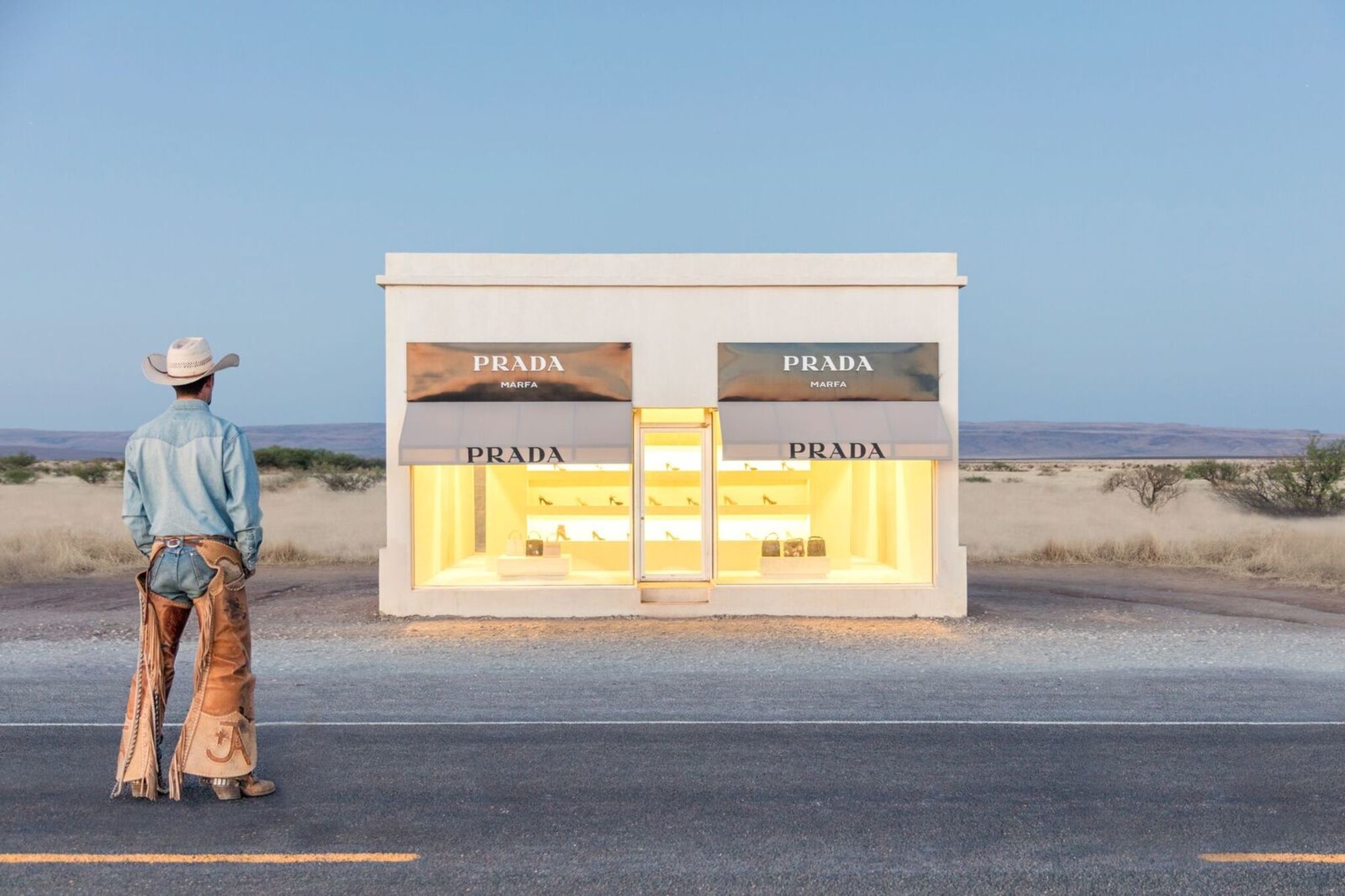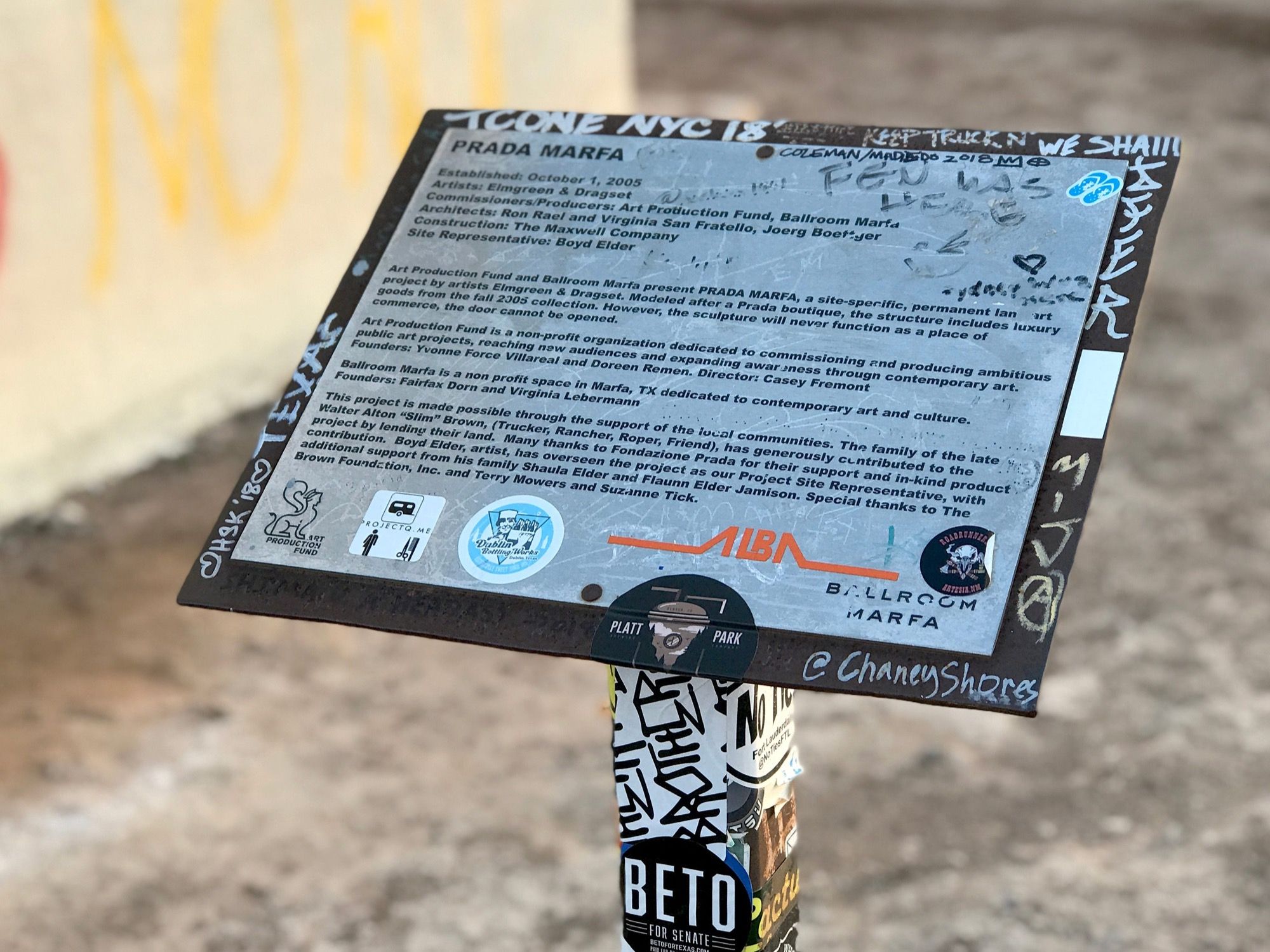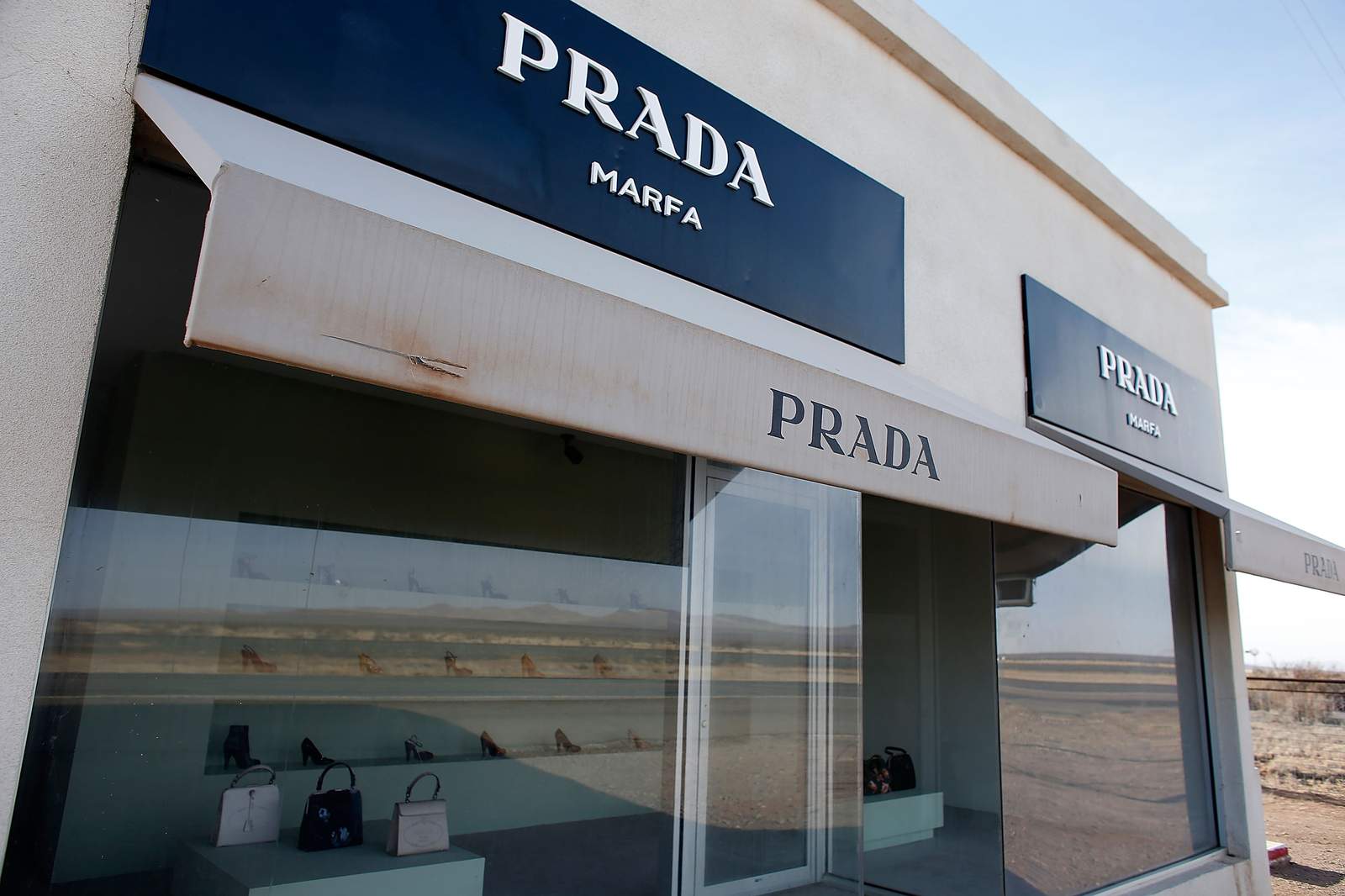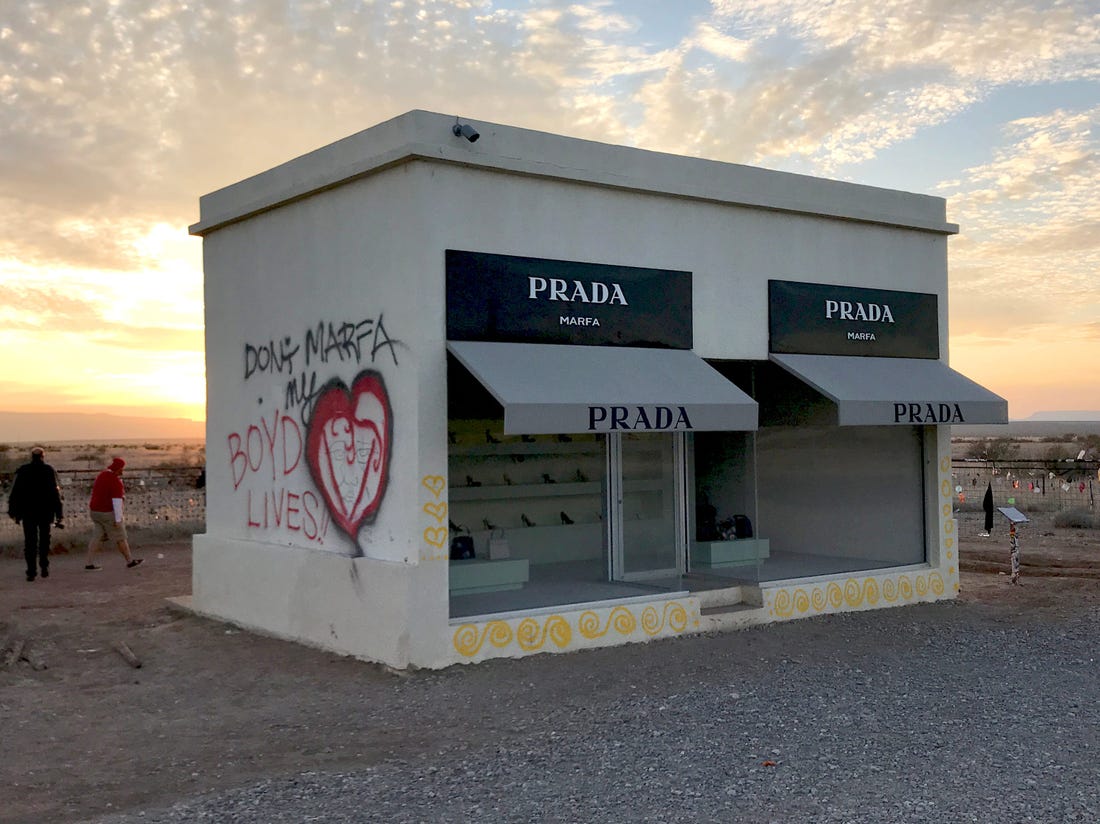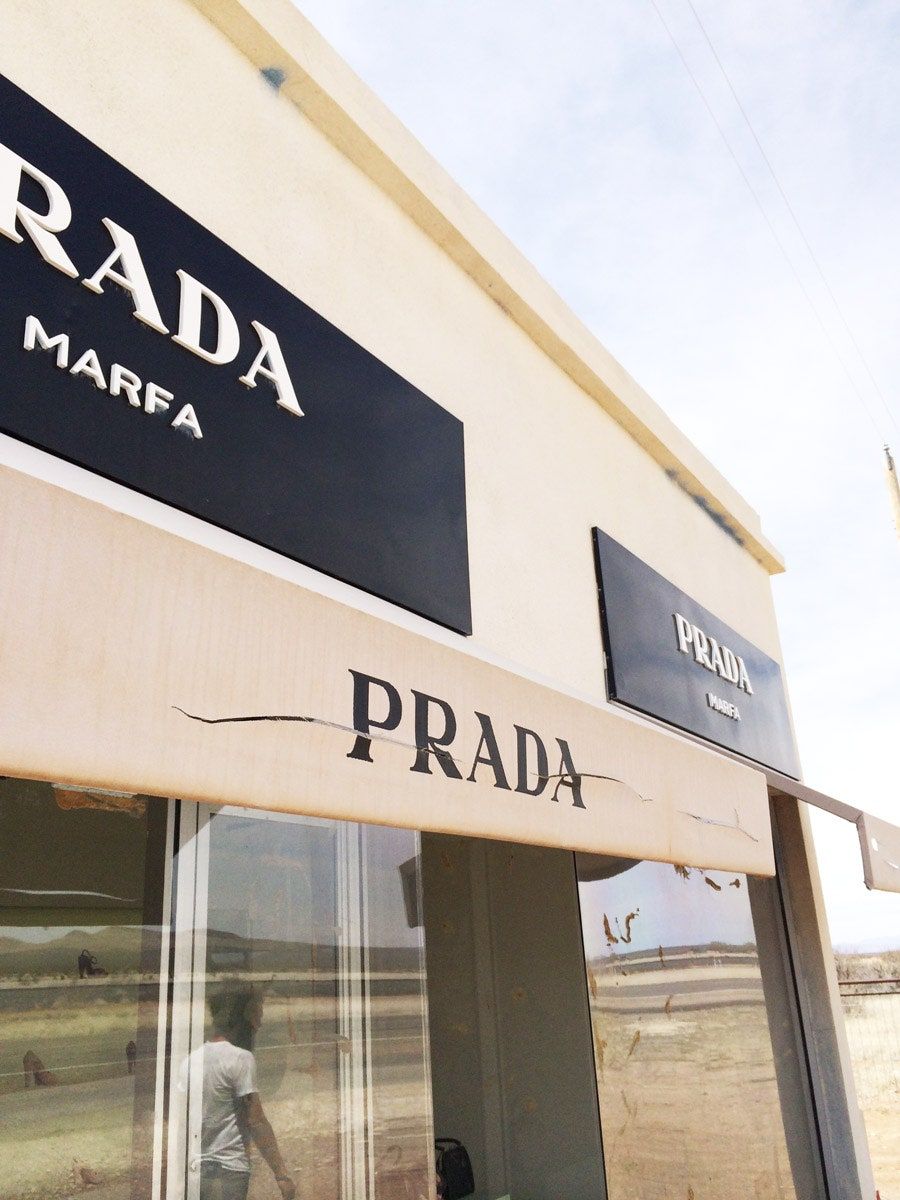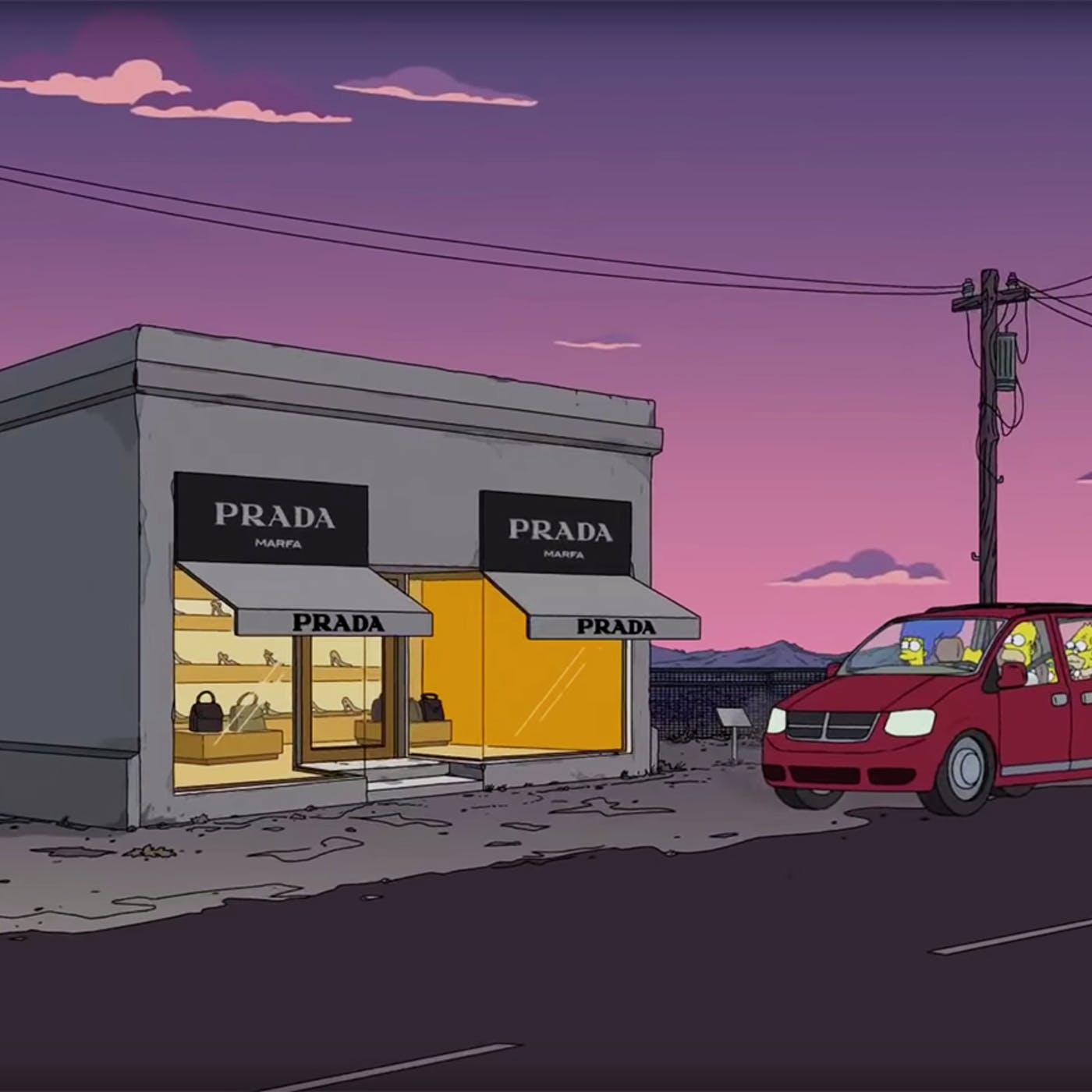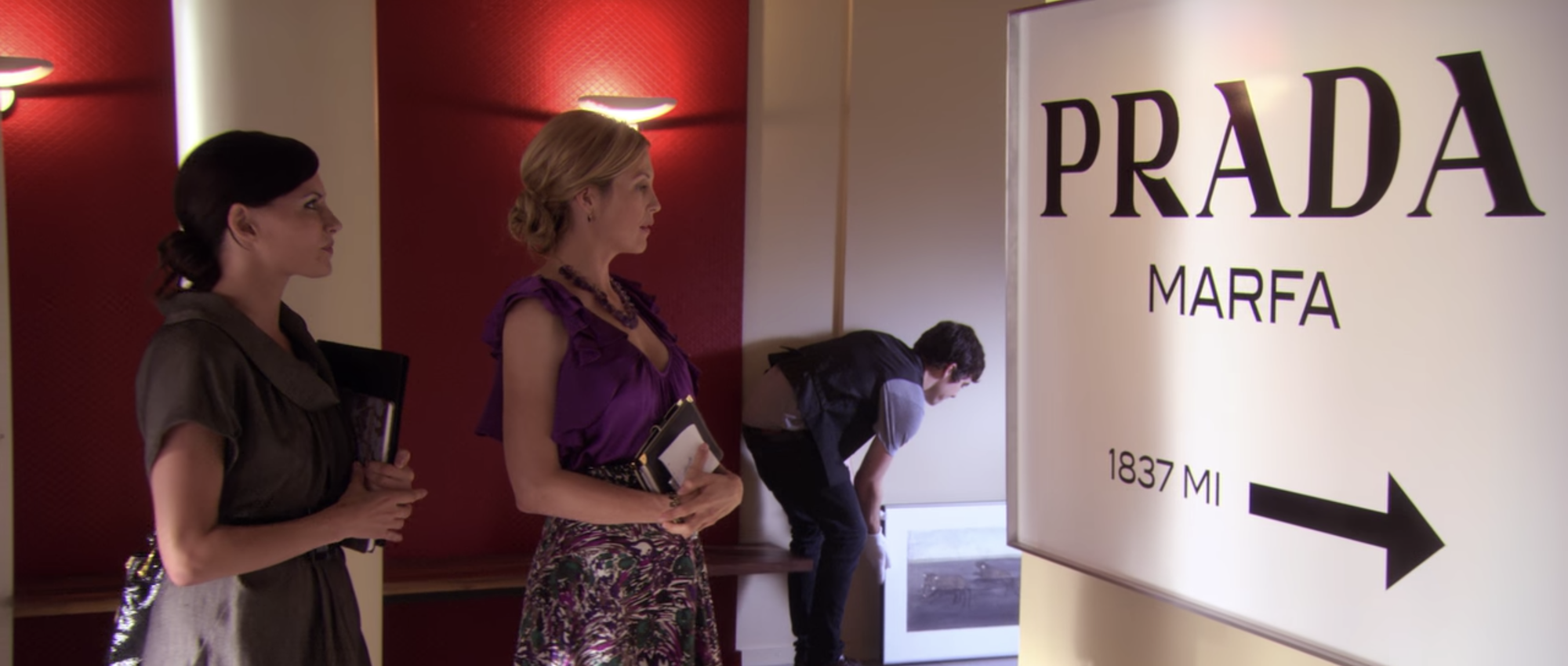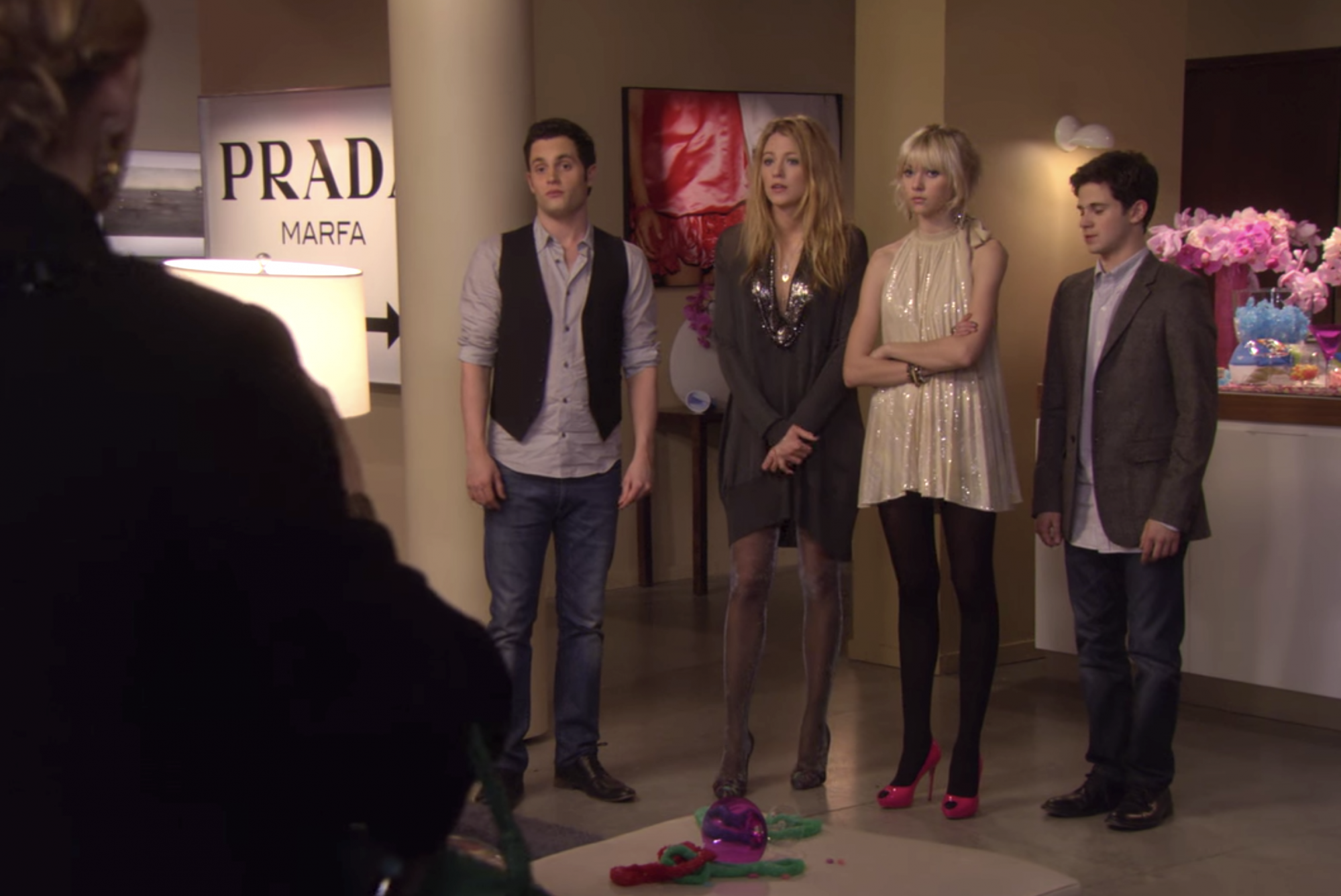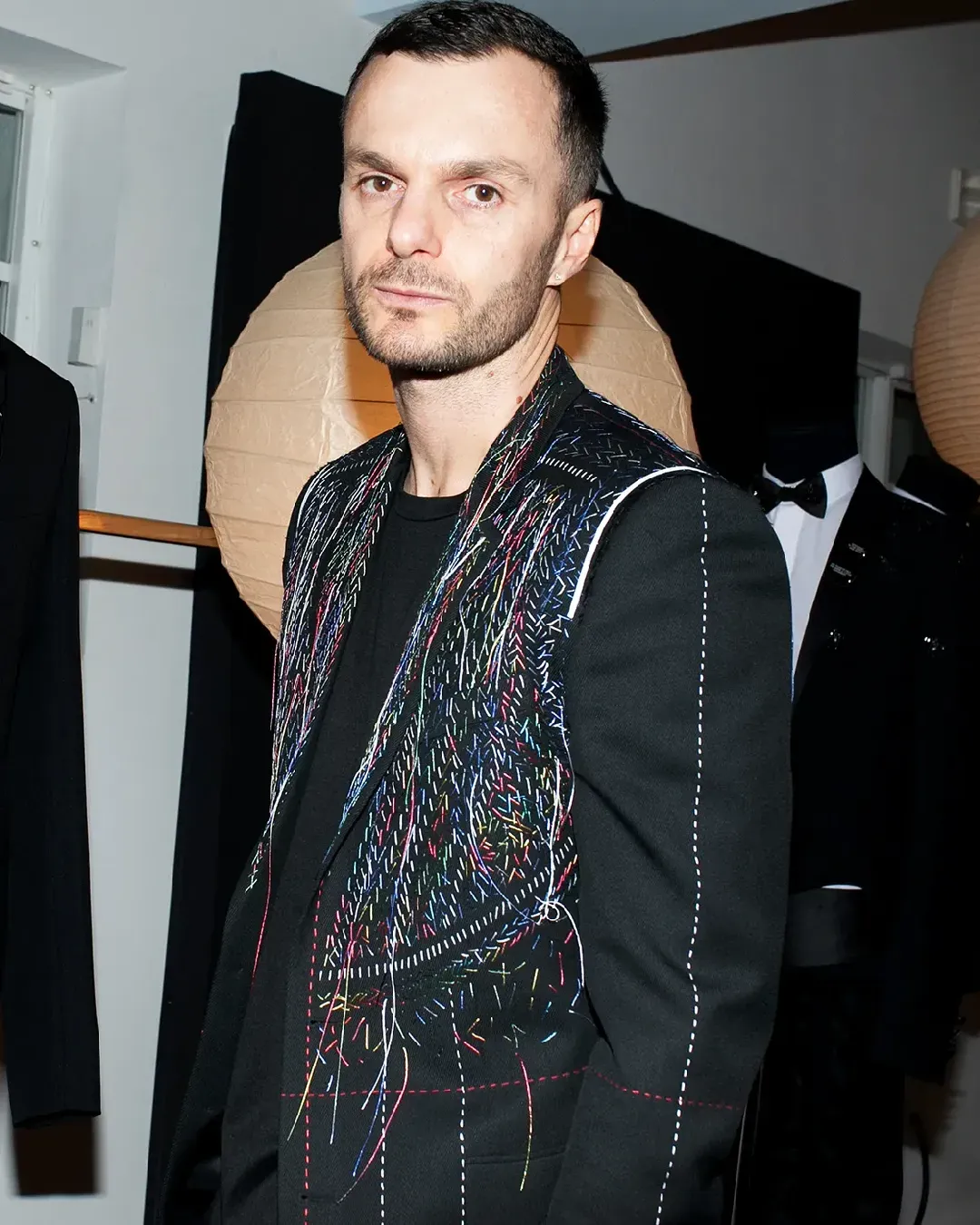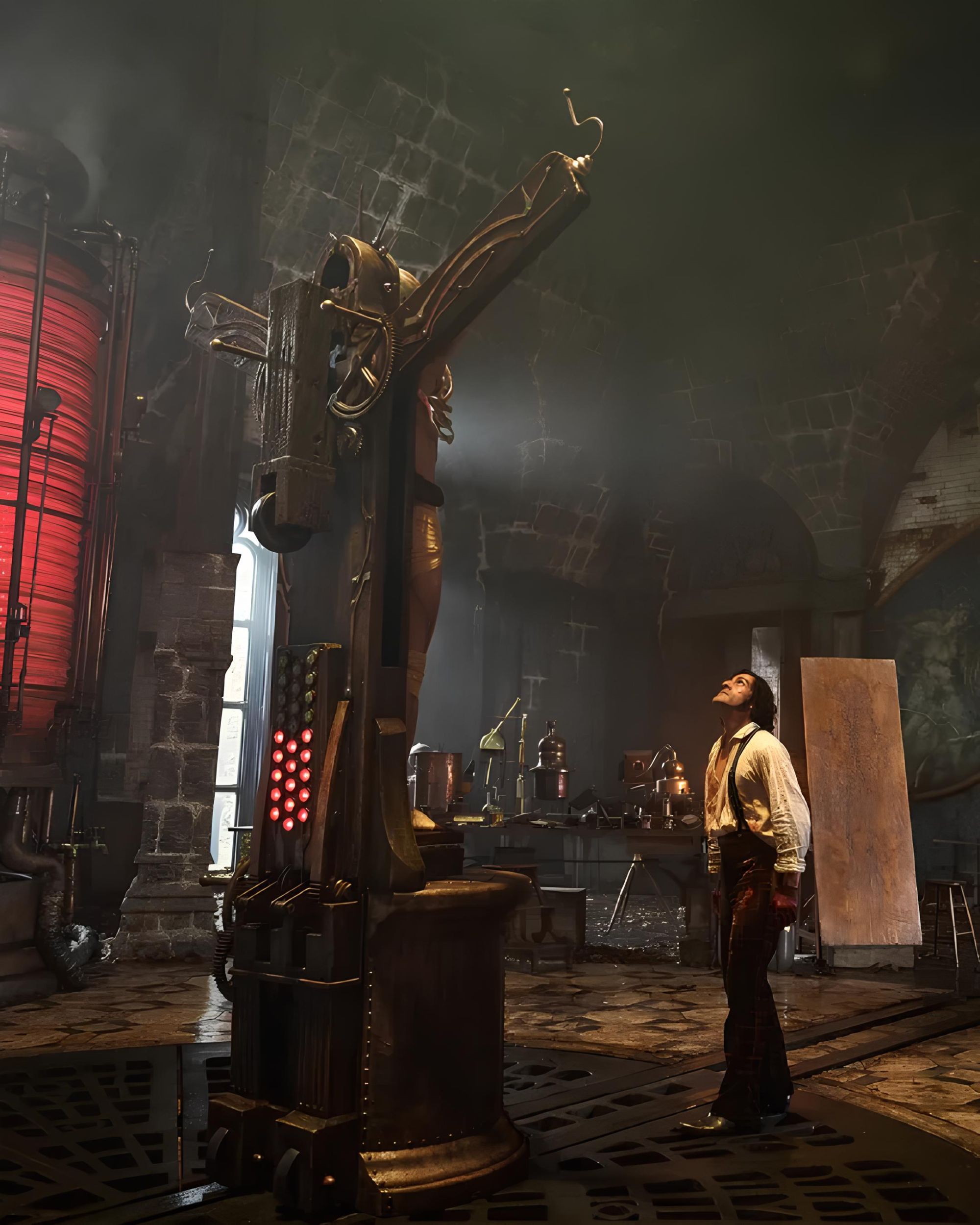
The history of Prada Marfa The art installation that has become a cultural phenomenon and the symbol of selfie culture
Between a Chanel bag and a YSL sandal, there was another detail that struck the viewer when Serena van der Woodsen returned home to the family penthouse in the Upper East Side: that painting, just around the corner of the elevator, which read, in black on a white background, Prada Marfa -> 1837 MI.
That painting became a small cultural phenomenon in the years in which Gossip Girl reached its maximum popularity, going to decorate the bedrooms of thousands of teenagers around the world (and their Pinterest boards), thanks to the reproductions of the artwork that could be found on any website. The fame of the piece of art - that in the painting was only evoked - became a pop phenomenon due to an episode of The Simpsons, and even more so, for a photo posted on Instagram by Beyoncé.
In its constant reinterpretations and reproductions, the work was also the source of inspiration for the artwork created by Timo Helgert for nss magazine Digital Cover 03, specifically for the room dedicated to the definition of luxury and the role of brands in the future.
Prada Marfa is a permanent art installation created in 2005 by the Scandinavian duo Elmgreen & Dragset, with the help of architects Ronald Rael and Virginia San Fratello. The artwork is located in the middle of the Chihuahua desert, in Texas, about 60 km from Marfa, a small town with just over a thousand inhabitants. The work is actually located in the territory of Valentine, a tiny town of 127 inhabitants, but it was financed by the Ballroom Marfa, a centre for contemporary art and culture, and by the Art Production Fund. The title of the work was meant to be a clear reference to Marfa, a symbolic city in the world of art, since Donald Judd, artist and architect of the minimalist movement, settled there in 1971, making it a must for all art lovers. The very structure of the work, so essential, is a tribute to Judd's architectural style.
Prada Marfa consists in the faithful reproduction of a Prada boutique: the black signs with white logo, the colour of the walls, the lighting and the floor are all details replicated starting from the real stores of the brand. Although the work was not commissioned by the Italian Maison, Miuccia Prada wanted to offer her support to the two artists, providing the store/installation of some accessories from the brand's FW05 collection, and allowing them to use the Prada logo without legal consequences.
The installation was conceived almost like an example of land art: the original idea was in fact that the structure would deteriorate over time, left to itself in a territory hostile to man, without external repairs or restoration. For this reason, the fake store was built with biodegradable materials, in particular with bricks made of adobe bricks. Three days after the inauguration, however, the work was vandalized - the word 'dumb' appeared written in spray paint on the side of the building - while Prada products were stolen. For this reason, since then, the structure and every item that is kept there are equipped with alarms, the windows installed are resistant to shocks, and given the numerous episodes of vandalism, the work is cyclically restored and cleaned, in fact, betraying the original intentions of the artists.
Elmgreen & Dragset's work was conceived as an accusation against American consumerism, retail tourism, gentrification, standing out as an ironic provocation towards Western materialism. However, it should be emphasized that in 2005, when the work was made, Instagram and Facebook and consequently the selfie culture they originated, did not exist. Over the years, Prada Marfa has become a must-see destination for every blogger, influencer and social media star, becoming the perfect backdrop for selfies with viral potential. Paradoxically, the thousands of images of people jumping in front of the fake store are the most accurate representation of the type of society that the work wanted to strike and criticize. The artwork itself has become a consumerist act, a place to be used only with an eye towards social media, thus becoming a means and thus losing its (enormous) communicative potential.
In all these years, despite having always stated that they were very happy with the success of their work, Elmgreen & Dragset could not help underlining that the work has taken on a completely different identity from the original one, an evolution that was possible due to the perception of the public, and its relationship with the artwork. As the two artists have stated, museums are where art goes to die, while public art takes on a life of its own. Prada Marfa was therefore not only conceived to dialogue with the natural elements and the landscape that surround it, but it was also designed to dialogue with the people who visit it, who each live the art experience in their own way. As Elmgreen told the Guardian, "When people interact with [public art], even vandalism can be seen as a positive – it’s a sign of people feeling that they have a say in public space."
It's quite ironic that in order not to incur legal action and to avoid the demolition of the work, Prada Marfa now boasts the title of 'museum'. What is not clear, however, is whether art here died or whether it was reborn.









































